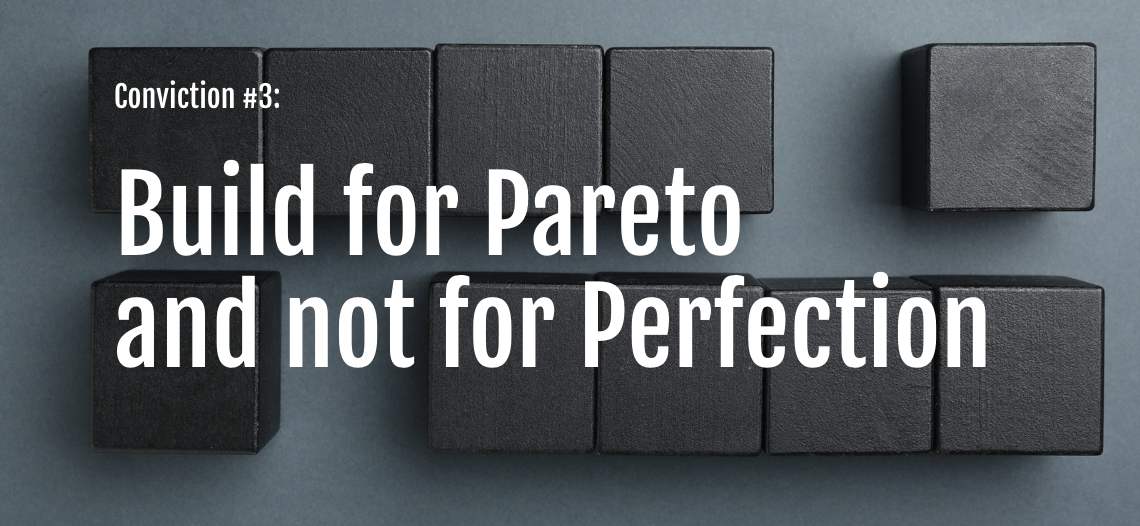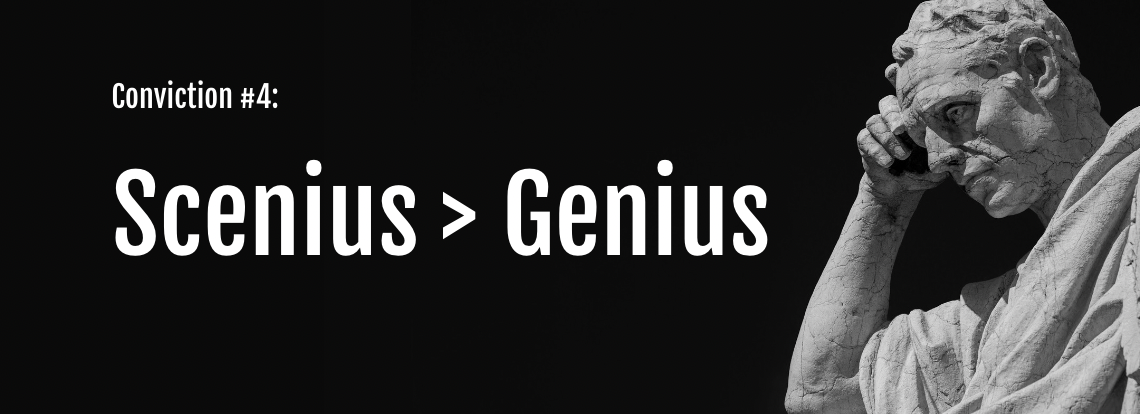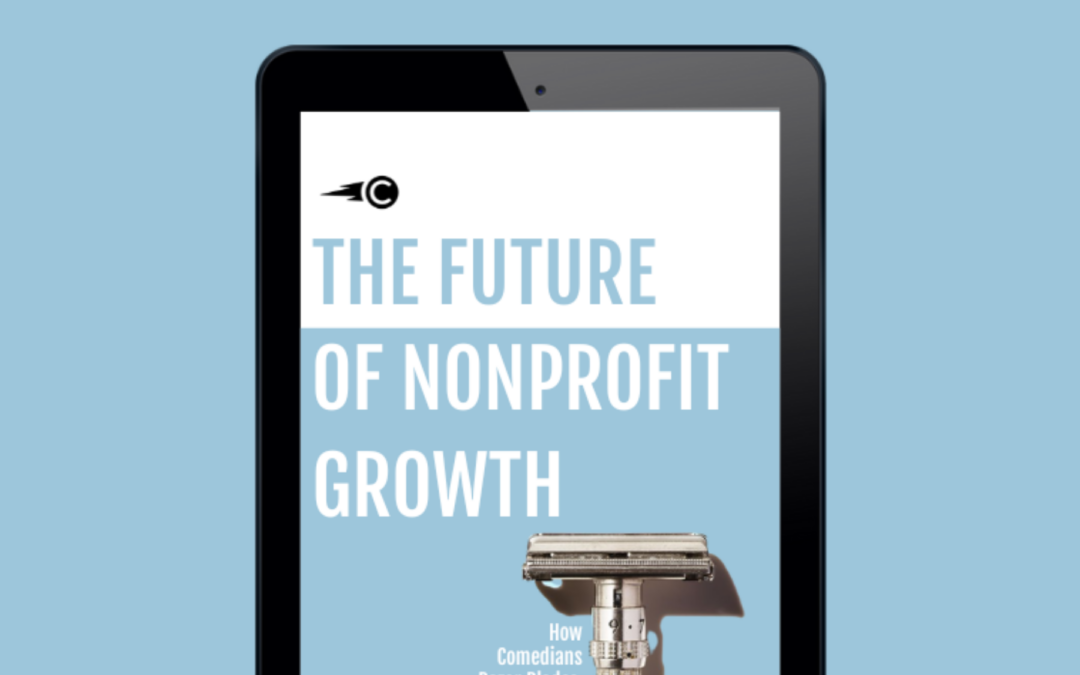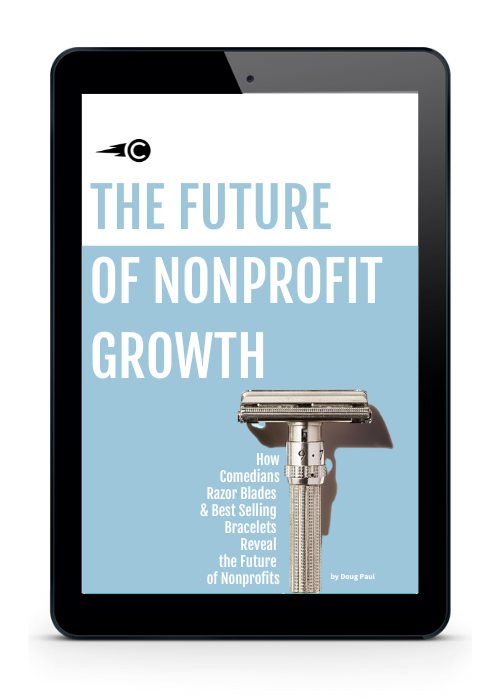No Results Found
The page you requested could not be found. Try refining your search, or use the navigation above to locate the post.


Organizational psychologist and Wharton Business School professor Adam Grant writes in his book Originals, “The more expertise and experience people gain, the more entrenched they become in a particular way of viewing the world…As we gain knowledge about a domain, we become prisoners of our prototypes.”
This is The Curse of Knowledge.
Think of it this way – Your own success works against you.
It’s as if your triumphs conspire against your creativity. The very domain you’ve come to know intimately transforms into a gilded cage, stifling your creative thinking and imaginative problem solving. Ironically, what you need most from someone leading your strategic planning process is not a seasoned sage of your industry:
You need someone who can serve as a strategic outsider.
Someone who can adapt seamlessly to any sector, with expertise centered on guiding the strategic planning process. Our Vision Integrator is specifically designed to help you defeat the Curse of Knowledge by bringing an outsider’s perspective, fresh insights and a collaborative process built for finding innovation.

We must become adept at anticipating and adapting to a future that has yet to materialize. This proactive approach to readiness and innovation will enable us to thrive in an ever-evolving landscape.
Wayne Gretzky is, undoubtedly, the greatest hockey player of all time and one of the greatest athletes who ever lived. When he was asked why he was such a remarkable player, he said it had little to do with his natural talent or raw athleticism. He boiled it down to one simple thing:
“I skate to where the puck is going to be,
not where it has been.”

Winston Churchill
The Pareto Principle states that 20% of your time, energy and resources will produce 80% of your results. In other words, find the right twenty percent to focus your energy on rather than trying to find the perfect solution.
A pivotal moment in organizational development occurred with the creation of StratOps, a comprehensive strategic planning process developed collaboratively with Disney and Tom Patterson. Its profound impact on both for-profit and nonprofit sectors cannot be overstated. Over the past 30 years, whether organizations employed the formal StratOp method, turned to other consultants like McKinsey, or utilized another strategic planning tool, chances are they were working with some iteration of the original.
The issue is that these strategic planning processes create a perfect plan, with endless minutia. The result: a 70+ page binder that gathers dust on a shelf while the world changes.
Our planning process will help you find the right 20% to achieve the greatest return on your investment of time and energy. It’s also flexible, practical and pragmatic, so that as things change, you have the flexibility to adapt.

Think about it like this: Brian Eno is one of the most successful, behind-the-scenes creatives in the last 200 years, but only a handful of people know who he is. While he has released a few music albums of his own, his real contribution comes through being a music producer, a harrowing role of shepherding a project from inspiration to completion. He’s produced albums for U2, Talking Heads, David Bowie, Coldplay, David Byrne, James Blake and a host of others.
When reflecting on the creative process, he noticed that it wasn’t one genius at the center of it, it was something else:
“There were … scenes involving lots and lots of people – some of them artists, some of them collectors, some of them curators, thinkers, theorists, people who were fashionable and knew what the hip things were – all sorts of people who created a kind of ecology of talent. And out of that ecology arose some wonderful work. “So I came up with this word ‘scenius’ – the intelligence of a whole operation or group of people. I think that’s a more useful way to think about culture.”
We want to make sure you have the right stakeholders in the room from your staff, donors and board. By involving this diverse array of voices and perspectives, we believe your strategic plan will not only be more comprehensive but also more robust and effective, owing to the collaborative and collective effort invested in its creation.

Rather than building a plan we hope people will like and feel compelled by, why not built it with them? The benefits of this collaborative approach extends well beyond mere buy-in. It’s akin to nurturing a garden. When you play a role in cultivating a garden, you’re not just tending to it for the sake of it; you want it to flourish, reflect your care and enjoy the fruit of its success.
One consistent observation we hear is how leaders are pleasantly surprised by the seamless activation of their plan and the substantial momentum it gains. Why does this happen? Because the very people who need to be energized were actively involved in its creation.
The page you requested could not be found. Try refining your search, or use the navigation above to locate the post.

Despite best efforts of nonprofit leaders, many times a strategic plan fails to deliver the goods.
It’s hard enough to get a gifted and capable team to align around a plan, so there are very few things more frustrating for a leader on an Executive Team than when the plan falls flat.
We’ve been there too! It sucks all the oxygen out of the room and feels like you’re stuck on a merry-go-round going nowhere. If we can know what those reasons are ahead of time, it could help you avoid those common misfires. We’ve worked with over 1300+ nonprofits and here are the most common reasons we’ve seen.
As you’ve recently experienced, it’s possible to construct a great plan and the world can render it obsolete in just a couple of weeks. But what’s even more common? “Change by a thousand papercuts.” The world is constantly changing and reinventing and we can wake up one morning have a useless plan in our hands.
The world has changed significantly in the last 15 years, but largely, the process for strategic planning for even the highest impact nonprofits has stayed the same.
Perhaps the only assumption we can make with one hundred perfect accuracy is that change is coming. However, some of the most used strategic planning methods build wonderfully constructed “hard plans.” If the world changes, the plan breaks. Leaders need a process for planning and a deliverable that can flex and anticipate changes. We need something antifragile.
While the best strategic plans are flexible, they also include measurable goals that are “chunked out” as they go. Plans that lack these key performance indicators (KPI’s) tend to find teams with decreased motivation, a lack of focus, and confusion as to how to make confident decisions towards their vision.
Harvard Business Review recently shared that somewhere between 60-90% of strategic plans never fully launch. There are a myriad of reasons for this, but in our experience, it’s a combination of three critical things: Missing accountability structures, Dispersed power centers that aren’t aligned on the plan, and The Plan activation itself started with a whimper rather than a bang. A winning strategic planning process must account for all three of these things.
The page you requested could not be found. Try refining your search, or use the navigation above to locate the post.

In this free ebook, we’ll take a journey through several surprising (and often, funny!) social movements before introducing the Scalability Tool. Over the last several years this tool has been one of the most talked about and useful innovations we’ve introduced to the CEO’s and Executive Directors we have the pleasure of serving.


Well I just finished leading a session at the “Future of the Church Summit” with Exponential and I wanted to share one idea I shared there. In fact, it’s one that I’ve been thinking about for the last 18 months.
…but before I get there, let me set the stage about where our ever-increasing-digital-world is.
This is the current digital terrain we live in:
It takes roughly 10 years to get research back on the long-term affects of a new technology, so we’re just seeing the first wave of results about how we relate to smartphones and what they do to us over time. And folks…it’s catastrophic.
What we are talking about is full-blown addiction.
Now in the 1930’s, there was another kind of addiction that finally got some breakthrough: Alcoholism.And through the inspiring work of Bill Wilson and Bob Smith, Alcoholics Anonymous was born. Today, more than 130 million people found freedom from an addiction they just couldn’t break. But even better? Scores of people encountered God and came to faith in Jesus Christ.
So what’s the big idea I’ve been thinking about for the last 18 months? There will be leaders who press into this opportunity to get people freedom from screen addiction. It’s hard to explain the ways in which there is a looming catastrophe on the horizon (if you haven’t watched The Social Dilemma on Netflix, it’s worth the watch). But as with all things, this presents a gospel opportunity for the people of God. Not only do we get to demonstrate what freedom from addiction looks like, we get to share stories of hope and a process for that breakthrough.
I believe getting people this level of freedom presents a generational opportunity for evangelism and discipleship. The question is this: Who will start working on it now?
I think Andy and Amy Crouch have done some great preliminary thinking on this with My Tech-Wise Life and The Tech-Wise Family. I know both of those books have been helpful in how my wife and I are discipling our kids (and ourselves!).
My crazy prayer I’ve been praying all week? Maybe the Lord is spurring one of the readers of this article, or one of the listeners at Exponential, to start the next AA.

Ten years ago, the idea of “missional” was driving almost all conversations in leadership circles and I think it’s fair to say 2009/10(ish) was the hay-day of the “missional conversation.” But was there a difference between the “conversation” happening in evangelical leadership circles and the movement itself?
Obviously things are different now. For this article of the Futurist Church Series, we invited 5 thought leaders who were in the thick of it 10 years ago to speak on the matter; people everyone would consider leading voices within the missional conversation. We asked each of them the same 5 questions to get a sense of where missional is and where it might be headed.





































For one, I’m not sure if it peaked ten years ago or was simply just first registering in the minds of many leaders across North America. But that aside, my hopes and dreams were that we would see a new wave of missional activity, the rise of new movements, and more by way of innovative church planting. My belief then, and still is, is that if we do not find our way to a missional expression of the church, Christianity in the West will continue towards precipitous decline.








Nearly ten years ago, I wrote The Road to Missional, and if you read my introduction to that book you’ll see I was responding to people who were saying the missional conversation was over back then. I wanted the book to be a gentle rebuke to those people who were saying the missional thing was good, we liked it, but it’s kinda over now. My point was that if you think this was a passing fad, the latest get-church-quick scheme, you didn’t understand the missional conversation in the first place. So if you’re asking what my hope was ten years ago, it was exactly that – that the church would stop seeing mission as a fad or a scheme or a strategy, and start to see it as the means by which we mirror God’s work in the world and glorify him. Ten years ago, I wanted the church to (a) embrace the cruciform nature of incarnational witness, (b) understand mission as bringing reconciliation, justice and beauty to a broken world, (c) see mission as wider than evangelism, (d) practice evangelism as more than the four spiritual laws, and (e) embrace its identity as a sent community of disciples. That’s all.








My hope was that the priesthood of the believer on mission in the everyday stuff of life would become the new norm – that every Christian would not only see themselves as a missionary, but be actively participating in everyday mission in effective ways that would lead to each believer making disciples who make disciples. As a result, the Church would grow in unprecedented ways through conversion grow and multiplication grow.







I simply hoped that more and more churches would see the need to activate all the people of God to engage in God’s mission more fully. I had no illusions that the entire Western church would make the shift, but I was hopeful that many would.








My hope for the “missional conversation” was a hope for renewal of mission in North America, not North America to the world, but incarnational mission in North America. For me this meant a wave of incarnational church plants, incarnational renewal of traditional churches. By ‘incarnational’ I meant Christian presence for the gospel outside the traditional four walls of church gatherings.








Well I think there is still a lot of activity going on that could be called broadly missional. For instance an uptake in church planting, new focus on discipleship, fledgling movements emerging, the phenomenal uptake on APEST typology of ministry across the spectrum, etc. (I listed some of these in my new edition of The Forgotten Ways). These are hopeful expressions….it is simply that there are not enough of them and we have yet to unequivocally demonstrate proof of concept.








Splintered. Those who saw missional as a strategy, and felt disappointed by it, have pursued its ideas into specialist areas, searching for the silver bullet to grow their churches. This has led to whole sub-conversations like fivefold, the parish/neighborhood conversation, bivo/covo, missional discipleship, community development, etc. etc. Missional was never meant to be a strategy so thinking you can parse it into increasingly bite-sized strategic objectives is to lose the beauty of what we all dreamed of 20 years ago.








For many Christians, missional seems optional and especially reserved for the most mature Christian.







Because the muscle memory of church growth thinking is so strong, the move towards mission is still in process for many churches.








“Missional” is a brand that has become domesticated to (and by) the traditional forms of protestant church in N. America.








As mentioned above, I’m not sure it has faded out. While the word missional is not being used as extensively, the phenomenon it has morphed into sub-conversations, e.g. multiplication, 5Q, etc. This is good and bad. Good in that the conversation is keeping, bad in that it is being done in ways that are reductionistic….many of them lack a comprehensive model of the church as missional movement. There is not as much ’symphony’ going on right now.








As I say above, it has fractured into specialist areas. Church leaders are looking for the special sauce. But while the missional vision includes fivefold, neighborhood, bivo, discipleship, etc, it involves much more. You pull each piece out from the whole at your peril. Fivefold won’t work in a traditional, unchanging church. Emphasizing neighborhood makes no sense in a dispersed suburban megachurch. I sometimes compare it to the 1980s third wave charismatic movement. That movement insisted that the gifts of the Spirit hadn’t ceased, demanding that we submit to this new move of God, encouraging us to speak in tongues and practice deliverance and words of knowledge. It represented a wholescale rethink of who we are and how we do church. But within ten years, conservative Protestant churches had just incorporated contemporary music, bands, and hand-raising while resisting full renewal by the Holy Spirit. I fear we’re at that place in the missional era. It’s as if the church is trying to retro-fit a few missional pieces into their existing machinery. But in The Shaping of Things to Come, Alan Hirsch and imagined a complete ecclesial overhaul with mission as its organizing principle.








First of all, I don’t believe it was carefully defined. As a result, every co-opted the term for anything they were doing outside the formal gathering of Sunday. Second, I think missional was seen as an action-oriented push for believers to look and move outward while lacking the deep formational aspect of developing believers into maturity in order to sustain any kind of healthy gospel movement. As a result, in a very pragmatic context, it turned into a new fadish strategy to grow a church (wrong goal). In turn, many churches did not see the outcomes they had hoped for and concluded that “missional” doesn’t work. They saw it as a strategy that turned into a short-lived fad because they failed to recognize that their theology, and theological vision was broken before they ever tried a ‘missional approach’. We needed a deeper repentance and correction about what we believe about God, the Gospel, and our view of the Church and her mission. Because this didn’t happen in most cases, the church merely shifted its programs and practices, while failing to repent of its poor theology and ministry philosophy.







I wouldn’t say it has faded out, it has simply been discovered to be difficult and counter to how many Christians have been taught and therefore not often embraced on a deep level.








“Missional” never moved, in my opinion, from an idea, a concept, challenge, or aspiration, to an actual practice of church in mission. It therefore got absorbed into modern Christendom systems of church.
















It challenged the gross over-steer of the church growth movement, which had come to reject the importance of social action, and emphasized evangelism-as-recruitment, the homogenous unit principle (where like attracts like), and the Sunday service as the doorway to the church. Missional was like a rock thrown into the steady flowing stream of church growth theory. It interrupted the flow. It questioned the assumptions and gave new ways of thinking about the church’s mission, ways that emphasized go rather than come. It unleashed young evangelicals into the world of justice-seeking, placemaking, and church planting.








It has led to a more honest critique of our scorecard and a willingness to admit we are not actually making disciples in the church as we thought. It also has shifted the conversation away just conversion and addition to a more holistic mission that includes all of life (as evidenced by faith and work initiatives) and is raising awareness about a need to focus on multiplication as well.







For those who have actually leaned into the conversation, it has been the recapturing of the missionary nature of the church.








The missional conversation led to a invigorated discussion on how to engage culture with the gospel. It offered many an opportunity to ‘reset’ what it means to be church. There are lasting effects to this day among many because of it.
















It’s so important to remember that missional is intrinsically rooted in Trinity and Kingdom. The missional mandate emerges from the character and action of the Triune God, not from the need to reach out. And its mission is not chiefly about planting and growing churches. It is about alerting everyone everywhere to the universal reign of God through Christ. This involves evangelism, but also has implications for racial reconciliation, social justice, creation care, and community development. There’s still so much more work to be done in these areas. As I said earlier, I think missional is in danger of becoming church growth theory 2.0. I truly hope the church can recover a more biblical missiology moving forward.








I am hopeful that we will see a true affirming and mobilization of the priesthood of every believer which includes an affirmation that all of life is ministry. I also am expecting a much deeper emphasis on spiritual formation that moves out on mission, not just one or the other. I am also hopeful for a greater ownership of the mission of the church by unpaid staff. In all of this, I am praying for a gospel saturation movement in North America.







My deepest hope is that the church would do everything possible to diminish the clergy-laity divide, which would lead to activating ALL the people of God to engage in His mission.








I hope and pray the “missional” conversation turns into a movement of some kind that cultivates leadership, practices of ecclesiology, sufficient to replant the church of His Kingdom in N. America at a time when evangelicalism is imploding and protestant mainline church keeps shrinking.
















I think the challenges posed by missional thinkers as long ago as Bishop Newbigin in the 80s and the American Newbiginians in the 90s and the emerging missional church leaders in the 00s are as fresh and as necessary as ever. Such movements need their prophets to stay the course, to refuse to give in to domesticating forces, and to continue to ruffle feathers. It’s lonely work, but important.








Properly identify the real problem. Clarify terms where a new word or concept is introduced, ensuring that the concept is deeply biblical. Recognize that the change needed is not just strategic, but theological and philosophical. Call leadership to repentance. Make sure leaders fully embrace and embody whatever it is they intend to lead others in. Then, be very clear about the cost necessary.







Again, I would push back a bit on the idea that the missional conversation has experienced “burnout.” If a movement is rooted theologically and missiologically, then it will not fade. I think what was called the “emergent movement” was a renewal movement that was more about style than mission. However, because a genuine missional conversation is rooted in the missionary nature of the Triune God (theology) and the interplay of the church with culture (missiology) I am not too concerned about it becoming a fading emphasis.








Don’t get sucked up in the hoopla. Focus on slow, steady, on the ground cultivating of actual communities where change and sustenance happens.
I am more convinced than ever of the rightness of the movement. The degraded state of the contemporary evangelical Christianity necessitates the very focii that the missional movement brings—a radical recentering on the life, teachings, and ministry of Jesus Christ; a theology of Lordship and not just personal salvation; a call to integrate justice into mission; incarnational forms of church planting; a recovery of full biblical typology of ministry (APEST); a recovery of the priority of discipleship; calling the church to rally around God’s purposes in the world as opposed to theological navel-gazing; etc.. We need these now more than ever! We must not stop in our efforts to remissionalize the church, in fact I believe we need to double down on them.